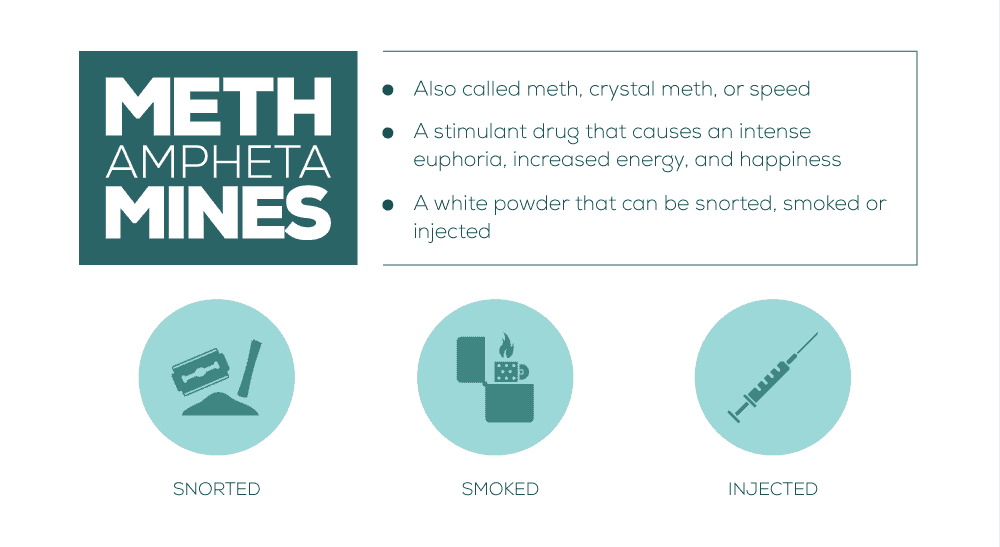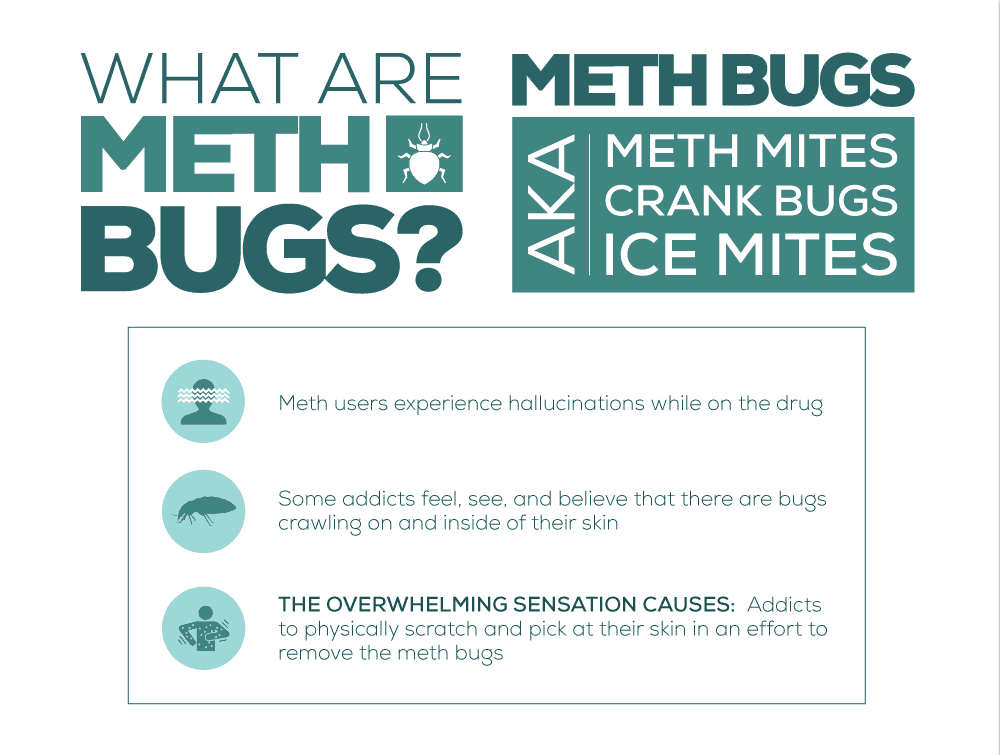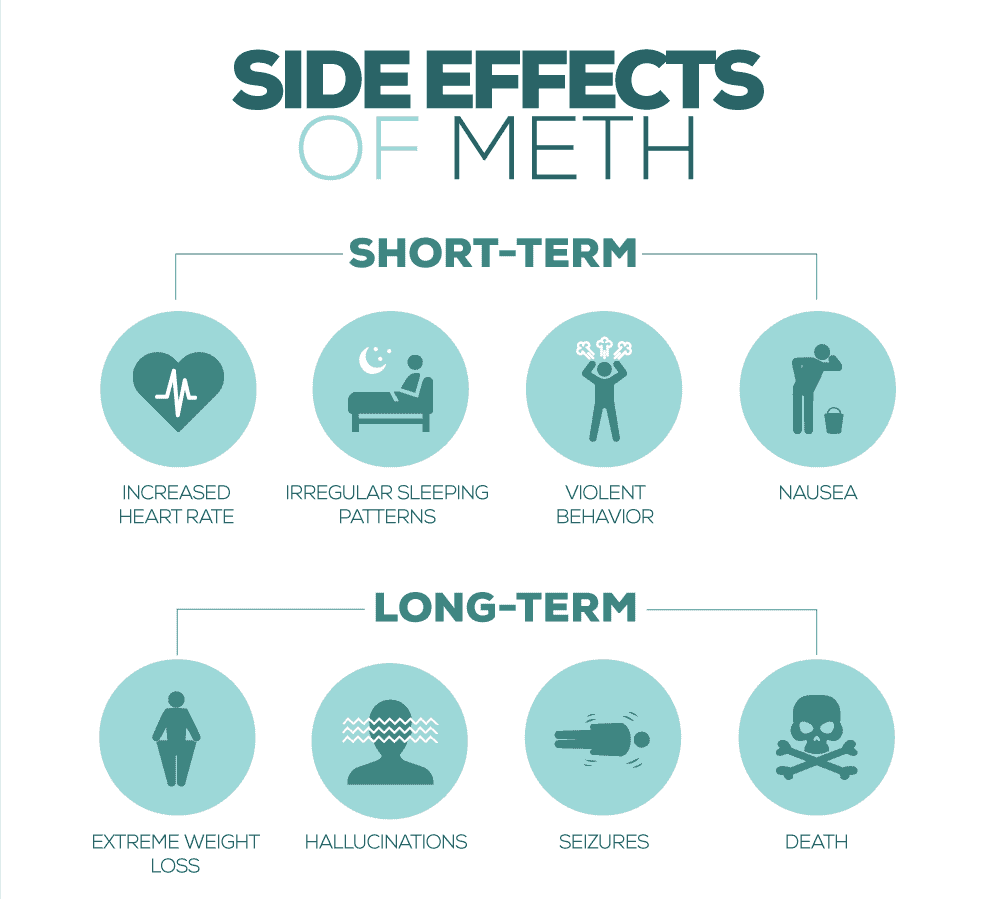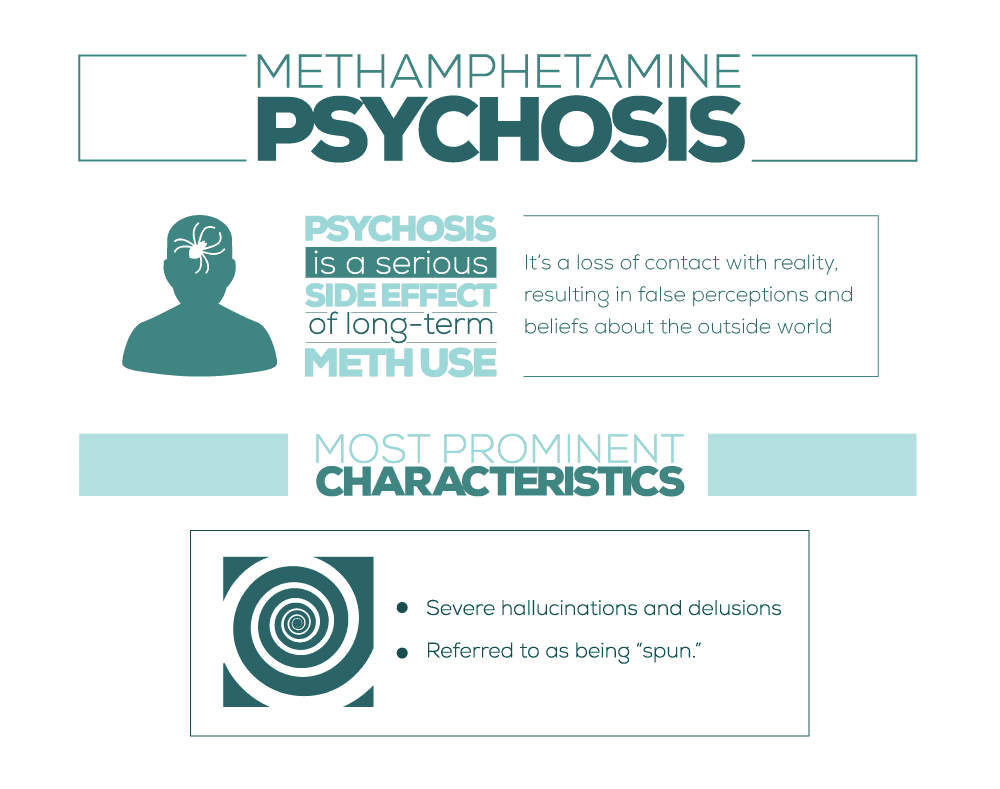Meth bugs. Meth mites. Crank bugs. Ice mites. Whatever you call them, they are an awful imaginary reality in the daily lives of methamphetamine users. What causes these imaginary bugs? If you are familiar with the effects of methamphetamine abuse, you know a meth addict when you see one. Methamphetamine users are characterized by the sores on their faces, arms, and other body parts caused by picking at their skin. These sores can range from small marks on the skin to severe scabs caused by repeatedly picking at the same places. If you ask about the marks, they may explain to you the presence of crank bugs on their bodies. What is a crank bug, though? These individuals pick at their skin due to hallucinations caused while on methamphetamines. These hallucinations are both tactile and visual, leading users to feel, see, and believe that there are bugs crawling on and inside of their skin. The sensations are so overwhelming that addicts will physically scratch and pick at their skin in an effort to remove the meth bugs.
“We treat meth addiction and co-occurring disorders such as depression and anxiety. Take a look at our residential program.”
More about Methamphetamines
Methamphetamine, also called meth, crystal meth, or speed, is a drug known as an amphetamine or a stimulant. It causes an intense rush of euphoria, happiness, and well-being that is quickly replaced with an overwhelming need for more once the user “comes down.” Meth is a white powder taken by snorting it through the nose, smoking it from a pipe, or injecting it with a needle. Effects of methamphetamines are notorious; an initial hit can last from six to eight hours but the comedown is often avoided through repeat use. This leads to some individuals staying up for numerous days at a time, also known as a “meth binge.” What starts as a seemingly fun way to get high quickly becomes a disaster as the highs become shorter and the comedowns become harder. Addicts will do anything to find their next fix, including stealing from friends or family members, or robbing houses or stores. 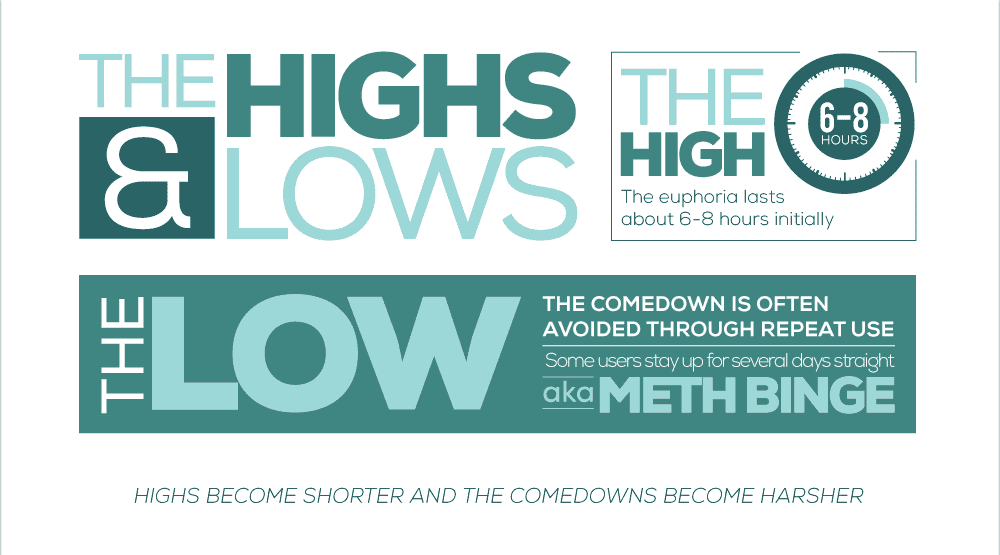
The Dangerous Chemical Production of Meth
Methamphetamine is a drug created from a combination of different dangerous and toxic chemicals. You may have heard of meth lab explosions, caused by careless individuals creating the drug in their homes. In reality, the majority of methamphetamine is made in massive labs in Mexico. Some of the harmful chemicals used to make speed include:
- Kerosene
- Paint thinner
- Rubbing alcohol
- Battery acid
- Ammonia
- Fertilizers
Federal regulations on the main ingredients of methamphetamine, like ephedrine and pseudoephedrine, has made it more difficult for addicts to cook homemade batches. Still, the determination in addicts is nearly unstoppable. Addicts still brew dangerous batches of poorly-manufactured meth in their homes or motel rooms for personal use or to sell. These toxic chemical combinations lead to an essential poisoning of the brain, causing a number of negative reactions and serious side effects. Some side effects are short-term but others can last long after the final hit of meth. Since addicts hardly test the drugs they receive, they have little knowledge of what exactly goes into the powder they consume. Most do not even care.
The Cause of Meth Bugs
The tactile and visual hallucination of crank bugs (also called meth bugs, meth mites, ice bugs, or ice mites), has a scientific explanation. The US Department of Justice coined it “formication.” One side effect of meth is a rise in body temperature which leads to increased sweating. The meth-laced sweat that is produced it contains an enzyme that increases blood flow to the skin. When the sweat dries up, it leaves this acidic enzyme behind on the user’s skin. The layer of protective oils normally in place to protect the skin is removed by these enzymes. Combined with the dehydration caused by meth, the user experiences a crawling sensation on the nerves in their skin. This encourages the hallucination and belief that meth mites are crawling across and underneath their skin. Although any sober person can see there are no actual bugs, the sensory feelings are very real to the person on meth. In order to relieve the sensation, meth users scratch and pick at their dry skin. The compulsive picking, both conscious and subconscious, leads to open sores that crack and bleed. Repeated picking in the same spot will re-open these wounds and make it difficult for the body to heal itself. Along with the toxic chemicals in their body, the lack of water intake, and the minimal amount of food ingested, their body has little to use to heal itself.
“Get your loved one the help they need. Our substance use disorder program accepts many health insurance plans, this is our residential program.”
Short-Term Effects of Methamphetamines
Methamphetamine use often begins in a recreational setting. Some use it as a party drug since it keeps the user away for extended periods of time. It allows for heavier drinking as it counteracts the drowsiness induced by heavy drinking. Others use it to help them stay awake on the job, such as truckers have a notorious reputation for doing. The short-term side effects may seem favorable from the outside looking in: increased alertness, sleeplessness, and loss of appetite leading to weight loss. It almost seems like a “get rich quick” type of scheme: stay attentive to what you’re doing and lose weight at the same time? However, it quickly turns into a destructive habit and eventual addiction for many methamphetamine users. The “benefits” are short-lived and quickly replaced with an overwhelming need for more drugs. Users chase the high they felt the first time they used meth but it is never the same; the receptors have been dulled and addicts are lulled into a false search for a high they’ll never feel again. In addition to sleeplessness, loss of appetite, and weight loss, meth users have noticeably dilated pupils. The black in their eyes seems to almost consume the entirety of the iris. It’s usually obvious when someone is on meth because of their dilated pupils, if their behavior doesn’t give it away first. Additional short-term side effects include:
- Increased heart rate
- Increased blood pressure
- Increased body temperature
- Irregular or erratic sleeping patterns
- Bizarre, erratic, or violent behavior
- Nausea
Long-Term Effects of Heavy Meth Use
Methamphetamines have detrimental effects, both physically and psychologically, on those who use them for long periods of time. They directly impact the functions of the brain which can end up having both short- and long-term effects. Some of the impacts of heavy methamphetamine use can last years after the last time the user gets high. Specific long-term effects of meth use include:
- Changes in brain structure and brain functioning
- Difficulties thinking and troubles with motor skills
- Decreased attention span
- Memory loss
- Aggressive or violent behavior
- Mood disorders
- Liver, kidney, and lung damage
- Minor to severe dental problems
- Extreme weight loss
- Psychosis, including paranoia, hallucinations, and repetitive motor activity
- Convulsions
- Seizures
- Death
These effects can have a life-altering impact, especially in those who do not experience a lessening in symptoms. The difficulties paying attention can lead to troubles getting or holding down a job, maintaining a family, or providing self-care.
Methamphetamine Psychosis: What is It?
Psychosis is a serious side effect of long-term meth use. Psychosis refers to a loss of contact with external reality, resulting in false perceptions and beliefs about the outside world. It is most often caused by heavy drug use, also called a “drug-induced psychosis.” The most prominent characteristics of a meth-induced psychosis are the severe hallucinations and delusions. The state of meth psychosis is also referred to as being “spun.” Oftentimes the psychosis and false beliefs can be so deeply ingrained that a patient’s history needs to be gathered from their family.
Hallucinations
Meth users experience various types of hallucinations, meaning false perceptions, associated with each of the five senses. They may experience only one or two, or they may experience all five types.
- Auditory: Auditory hallucinations are imaginary sounds or conversations, and are the most common type of hallucination. The sounds or voices can be either inside the user’s head or they may even believe there is something else in the room with them. Sometimes these hallucinations command the user to do something or commit an act, usually of violence against themselves or someone else.
- Visual: Visual hallucinations refer to seeing things that are not there in reality. These things may be objects, animals, or even other people. Many meth users refer to “shadow people,” which are visual hallucinations usually in the peripheral vision, leading them to believe someone is standing there.
- Olfactory: Olfactory hallucinations refer to smelling things that are not actually present. Users may smell any sort of thing, from food to the smell of rotting objects.
- Tactile: Tactile hallucinations are the false sense of touch, mostly of something on or underneath the skin. Formication, or the sensation of crank bugs, is a mostly tactile hallucination.
- Gustatory: Gustatory hallucinations are a false belief in regards to taste. Some may believe that their food has foreign objects in it.
Meth users experience mostly visual and tactile hallucinations. The sensation of meth mites is mainly a tactile hallucination, but some users may experience visual hallucinations linked with it. In order to relieve themselves of the false sense of meth bugs crawling on their skin, they will scratch and pick to remove the imaginary bugs. As the psychosis deepens, their hallucinations become more severe.
Delusions
Delusions refer to the false belief that cannot be corrected through reason. Meth addicts in a severe psychosis may believe themselves to be an entirely different person or an alter-ego. Their belief cannot be shaken by friends, family, or doctors without intensive treatment.
Paranoia
Paranoia is an incredibly common side effect of long-term meth use. Users may believe the government is observing them or out to get them. Others believe that everyone around them is an undercover agent, trying to find out the secrets they believe they carry.
“We accept many health insurance plans. Get your life back in order, take a look at our residential program.”
Treating Crank Bugs and Methamphetamine Psychosis
Trying to manage someone in a psychosis by yourself can be difficult, frustrating, and even dangerous. Some addicts find themselves in such a severe psychosis that they cannot escape without detoxification and medical intervention. These individuals may require hospitalization or a stay in an inpatient medical detox facility. Just because someone stops using methamphetamines does not mean the side effects immediately subside. The psychological effects of meth use often remain for weeks to months to years, aided only through work with a counselor, therapist, or psychiatrist. Some of the delusions and paranoia may carry over with users still operating under the belief that someone is out to get them. In order to interrupt the extreme hallucinations, delusions, and paranoia, some doctors may prescribe Haloperidol, or Haldol. It is a medication used with to treat specific mental and mood disorders (such as schizophrenia or other schizoaffective disorders). It helps clear the mind and reduce anxiety in order to help addicts in recovery achieve a relatively normal life. Other methods such as addiction treatment or 12-step recovery can help recovering meth addicts find long-term clean time. Escaping from the mental confinements of meth addiction is challenging and overwhelming but is easier when surrounded by others who want the same thing. Working at sobriety with a community of likeminded individuals helps addicts not feel so alone.
What Did you Think About This Blog?
Give it a Rating!


